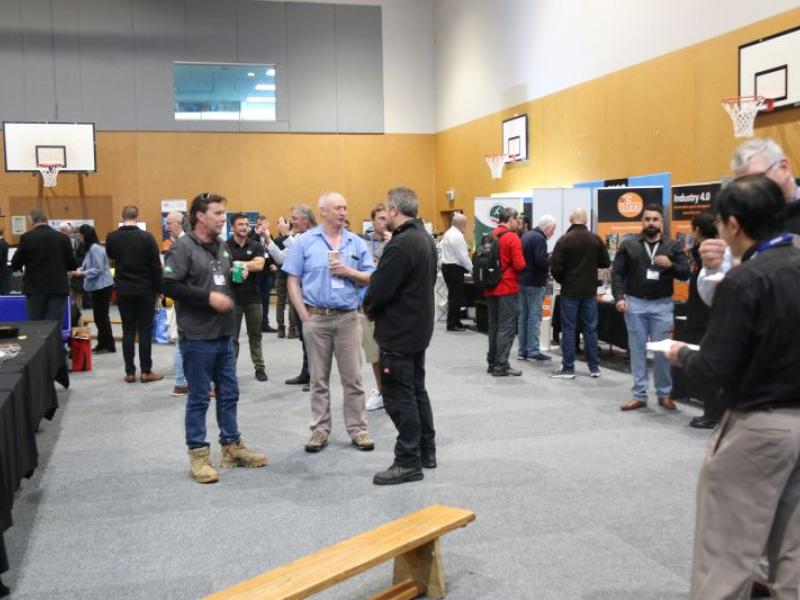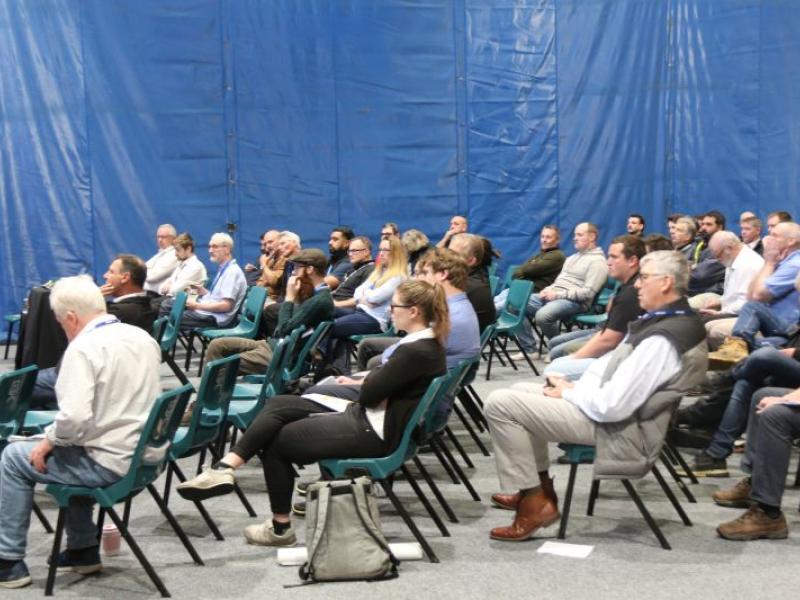Equipped with the right predictive maintenance tools, a reliability engineer can perform condition monitoring, predict impending machine failure and initiate the necessary changes to improve the reliability of a machine or plant. Clyde Volpe from the Vibration Institute Australia describes the most important tools in this reliability toolbox.
Vibration analysis
Vibration analysis can be considered the cornerstone of any effective condition monitoring program. Art Crawford, the founder of IRD, has said that “no single measurement can provide as much information about a machine as the vibration signature.” Every piece of rotating mechanical equipment generates a characteristic vibration frequency. The vibration signature of a machine is a combination of the vibration frequencies of all parts of the machine.
“Mechanical problems such as unbalance, misalignment, worn gears or bearings and looseness can cause this normal level of vibration to increase or become excessive and thus change the machine’s vibration signature,” says Clyde. “By measuring the three vibration parameters-displacement, velocity and acceleration, trending vibration change over time, and analysing the gathered data, it is possible to assess the severity and cause of a developing fault and predict the best time for the faulty component to be replaced.” Vibration analysis can be used with rotating equipment such as motors, pumps, fans, blowers, gear boxes, rollers, mills, crushers, turbines and compressors, but also with interconnected structures, static equipment and piping.
Ultrasonic monitoring
Ultrasonic monitoring systems are an extension of the human ear. We are able to hear in a range from 20Hz to 20kHz; ultrasonic detectors can ‘hear’ frequencies ranging from 20kHz to 100kHz. Changes in these high-frequency ultrasonic signatures emitted by machines can provide the earliest signs of machine and bearing failure or lubrication problems. Ultrasonic sound travels through air and solid objects, but not through avacuum. “An ultrasonic gun is required to measure the either airborne or structure-borne high frequency signal,” says Clyde, “and then heterodyne that signal. That means the high frequency, which is inaudible to the human ear, is turned into a lower frequency that is audible to humans, like listening to a radio.” Operators can directly listen to the signals to search for leaks and faults, or the signals are measured in dBs. The data can also then be analysed and displayed as time-wave form or as spectrum.
Clyde explains that there is no better technique than ultrasonic monitoring to find air and gas leaks. “A small leak over one year can cost you thousands of dollars. Compressed air is the most expensive product you have on your plant. It takes 9kW of energy to create 1kW of compressed air. If you have a little leak, it’s just money going right up into the atmosphere.” A high pressure leak in a pipe creates a turbulent flow and some high frequencies, which can be picked up by the ultrasonic gun. But it doesn’t work with a low pressure laminar leak. The high frequency emission of a leak is very directional, making it easy to pinpoint its precise source. The volume of the emission depends on the distance from the source. “The closer you get, the louder and softer the sound becomes,” says Clyde. “Ultrasonic monitoring is also a good tool to locate leaks in steam traps and valve seats, cavitation problems in hydraulic pumps, boiler tube and heat exchanger leaks and compressor valve leakage. Due to the fact that friction between surfaces creates ultrasound, lubrication problems and bearing faults can also be detected. Checking while lubricating is possible.”
When it comes to electrical equipment, ultrasonic monitoring constitutes an important complement to thermography and can detect loose connections, corona discharges, arcing, and tracking.
“Ultrasound is now a standard part of condition monitoring programmes, the equipment is not expensive and it is not difficult to operate. It can be used to detect faults that other technologies can’t. The ultrasound signals are extremely directional- sudden changes can be heard in ultrasound first,” says Clyde. “The technique is useful in high noise environments and during peak production hours and can be integrated with other predictive maintenance technologies. Ultrasonic monitoring is a definite must for a reliability engineer.”
Thermography
Machines and electrical equipment emit radiant energy (heat). An increased amount of emitted heat can indicate a fault condition. A thermal imaging camera measures the (invisible) infrared radiation within its field of view, calculates the temperature of the measured object and generates an image in which different colours represent the temperature distribution on the surface of the object. “The heat source may be inside the object. But the camera can only see the surface temperature. You can’t penetrate through a surface with thermography,” explains Clyde. “The temperature change over time is more important than the temperature itself. Comparing the temperature at selected points provides the best indication of severity. You should check your plant regularly with an infrared camera.”
A lot of factors need to be considered to measure the accurate temperature with a thermal imaging camera. “When you are too far away from the object you are shooting the average temperature in a circle. Get closer and you can shoot the temperature of a spot.” An infrared camera detects all three forms of radiation: emission, reflection and transmission. “All objects emit, reflect and transmit heat differently. Therefore it is important to know the emissivity of an object. Surface properties determine the emissivity of an object,” says Clyde. “Black is a lot more emissive than silver, even on the same surface material. The emissivity of an object should be 0.6 or greater to obtain fairly accurate measurements.” Wind makes temperature measurements unreliable, and so does reflected sunlight.
In mechanical applications heat can be generated by friction of defective parts, misalignment, wear, poor lubrication and misuse.
Some examples:
bearings, motors and pumps, couplings, steam traps, condensers, heat exchangers and piping. Loose, oxidised or corroded connections or component malfunctions are responsible for increased temperatures in electrical applications such as transformers, circuit breakers, distribution panels, connections and cable trays.
Oil analysis
Lubricants prevent metal-to-metal contact in a machine and protect against corrosive substances. “The lubricant is the life-blood of rotating equipment.
It is essential that it is maintained in good condition; it must not be dirty or contaminated with water or dirt,” says Clyde. “Oil also reveals if there are any signs of wear within the machine. Samples should be collected routinely and then analysed either on-site or sent to the laboratory.” The laboratory can perform a variety of tests such as water, viscosity, elemental concentrations, degradation, acid levels, base levels, and particle counting for NAS or ISO cleanliness. “When you send an oil sample to the laboratory, it may only be tested for particles of up to 8 or 10 microns. If the particles are larger, the lab is going to miss them. The problem with this: When something initially wears it produces a large particle. The lab picks it up only when the particles become crunched up into smaller pieces. The onset of wear is not well seen by this kind of test.” Clyde recommends having a wear particle analysis done to determine the condition of equipment based on the concentration of wear particles in the lubricant. “It is possible for oil analysis to detect a problem with a gearbox months before vibration analysis picks up the first signs of an impending failure.”
Oil analysis alone is not suitable for determining the machine condition. “It can’t tell you if there is imbalance or misalignment. You have to do oil analysis and vibration analysis together,” says Clyde. But oil analysis is more important when it comes to reliability than vibration analysis.
“Vibration analysis just collects data. It doesn’t make the machine live longer. But if I find something wrong in the oil, I can tell you to clean the oil, and the machine runs longer,” emphasises Clyde, “You need to concentrate on improving the ISO cleanliness across your plant, especially when you’ve got hydraulics,” explains Clyde and adds, “If you drop down by one ISO grade of cleanliness, you’ll increase the life of the gearbox or machine by 30 percent. If you want to improve the life of your machine, clean the oil.”
Motor testing
Motor circuit analysis and motor current signature analysis can be used to perform one-time troubleshooting or periodic testing to trend motor performance over time. Motor circuit analysis (MCA) measures resistance, impedance, inductance, phase angle and ground insulation to determine the condition of the electric motor circuits and detect electrical imbalances and insulation degradation. There are two major tests categories: online and offline. The former splits in two categories: current analysis and voltage analysis. MCA can detect cable and contact faults, winding shorts, poor connections, air gap and rotor faults and winding grounds and contamination. Motor current signature analysis (MCSA) is a non-intrusive method for detecting mechanical and electrical problems of AC induction motors. The motor current is recorded during operation and analysed in the frequency domain.
Variations in the current signature can indicate issues such as phase unbalance, problems with rotor bars, faulty collector rings as well as dynamic and static eccentricity.






